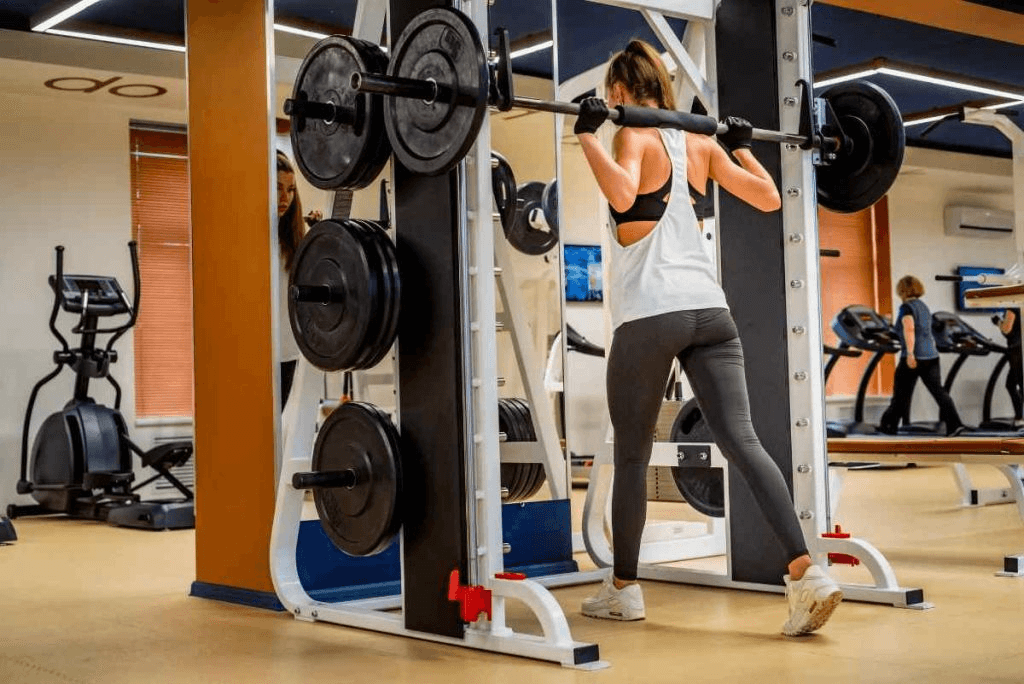When you step into a gym, the sheer variety of gym equipment types can be overwhelming. Whether you're a beginner or an experienced fitness enthusiast, understanding the different kinds of gym equipment available can help you make informed decisions about your workouts. Each piece of weight equipment is designed to target specific muscle groups and improve strength, endurance, and overall fitness. In this guide, we’ll explore the types of weight lifting equipment, types of exercise equipment at gyms, and other equipments in gym that you’ll commonly encounter.
Free Weights: Dumbbells, Barbells, and Kettlebells
Free weights are a classic and essential part of any gym. They allow for a full range of motion and are versatile enough to work multiple muscle groups at once. The primary types of weight lifting equipment in this category include:
- Dumbbells: These small, handheld weights come in a variety of sizes and are perfect for exercises like curls, presses, and raises.
- Barbells: Longer than dumbbells, barbells can be loaded with weight plates to target larger muscle groups in exercises such as squats, deadlifts, and bench presses.
- Kettlebells: These unique weights are designed for dynamic movements and are great for swings, snatches, and other functional training exercises.
Free weights provide a different type of gym equipment experience compared to machines, as they require more stability and coordination from the user.
Strength Training Machines
For those who prefer more structured guidance during their workouts, strength training machines are an excellent choice. These machines use pulleys, cables, and weight stacks to isolate specific muscles and help prevent injury by providing stability. Some of the most common types of equipment in gym include:
- Leg Press Machines: Great for targeting the quadriceps, hamstrings, and glutes.
- Lat Pulldown Machines: Designed to work the upper back and biceps, helping you build pulling strength.
- Chest Press Machines: These mimic the bench press movement, providing a safe way to strengthen the chest, shoulders, and triceps.
- Cable Machines: These machines are versatile and can be used for a variety of exercises targeting different muscle groups, from tricep extensions to cable rows.
These machines are considered some of the different types of gym machines that provide more controlled movement patterns, which can be beneficial for beginners or those recovering from injury.
Cardio Equipment
While strength training is essential for muscle building, cardiovascular fitness is just as important. Most gyms offer a variety of types of exercise equipment at gyms designed for aerobic workouts. The most common options include:
- Treadmills: One of the most popular cardio machines, treadmills allow users to walk, jog, or run indoors.
- Elliptical Trainers: These provide a low-impact workout that targets both the upper and lower body.
- Stationary Bikes: Whether upright or recumbent, stationary bikes provide a great way to boost cardiovascular endurance.
- Rowing Machines: Rowers engage both the upper and lower body while improving cardiovascular fitness and building strength.
Cardio equipment can help improve heart health, burn calories, and increase stamina, making it an essential part of any workout routine.
Flexibility and Mobility Equipment
Stretching and mobility work are essential components of a well-rounded fitness routine. There are several types of gym equipment designed specifically for these purposes:
- Foam Rollers: These are used for self-myofascial release, which helps reduce muscle soreness and improve flexibility.
- Resistance Bands: While also used for strength training, resistance bands are excellent for stretching exercises and mobility work.
- Stretching Machines: Some gyms offer machines that assist with stretching, which can help improve range of motion and flexibility.
Incorporating mobility work and flexibility exercises into your workout routine can prevent injury and improve overall performance.
Functional Training Equipment
Functional training is designed to improve everyday movements and athletic performance. This type of training often incorporates equipment that helps mimic real-world movements. Some of the different types of gym equipment used in functional training include:
- Medicine Balls: Used for dynamic exercises such as slams, throws, and rotational movements.
- TRX Suspension Trainers: These straps allow users to perform bodyweight exercises that engage the core and build overall strength.
- Plyometric Boxes: Often used for jumping exercises that improve explosive power, agility, and coordination.
These types of gym equipment help improve strength, balance, and agility, all while enhancing functional movement patterns.
Specialized Machines for Bodybuilding and Powerlifting
For those serious about bodybuilding or powerlifting, certain types of gym equipment are specifically designed to help lift heavier weights and target specific muscle groups. These include:
- Squat Racks: Essential for performing squats, deadlifts, and overhead presses with heavy weights.
- Smith Machines: These are guided weight machines that provide extra stability when performing lifts like squats, bench presses, and deadlifts.
- Hack Squat Machines: This machine isolates the legs while providing a stable environment for heavy squatting motions.
These specialized machines help bodybuilders and powerlifters push their limits safely while targeting specific muscle groups with precision.
Conclusion
Whether you're using types of weight equipment, gym equipment types, or different types of gym machines, each piece of equipment in the gym serves a unique purpose to help you achieve your fitness goals. Understanding the different types of exercise equipment at gyms and how they target various muscle groups will enable you to create a balanced and effective workout routine. From free weights to cardio machines, incorporating a variety of equipment into your regimen will ensure well-rounded progress and prevent plateaus in your training.
No matter your fitness level or goal, knowing the types of weight lifting equipment and how to use them will make your time in the gym more productive and enjoyable.











































Leave a comment
This site is protected by hCaptcha and the hCaptcha Privacy Policy and Terms of Service apply.